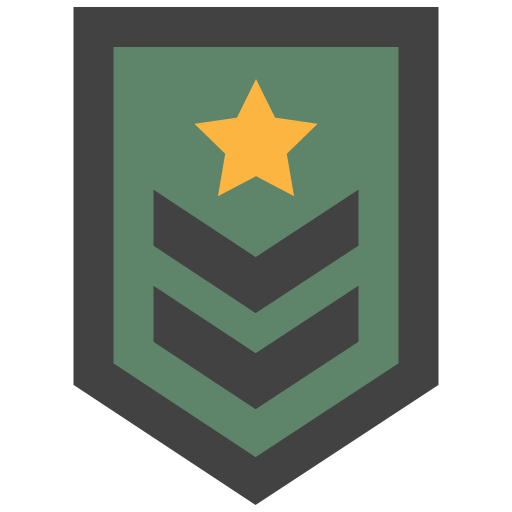Introduction

How is the Military in India and how does it work to maintain Sucity and fight terrorism? In terms of Military and security forces, we have the Indian Armed Forces (IAF): Army, Navy, Air Force, Coast Guard
Ministry of Home Affairs: Central Police Organization, Central Armed Police Forces (includes Assam Rifles, Border Security Force, Central Industrial Security Force, Central Reserve Police Force, Indo-Tibetan Border Police, National Security Guards, Sashastra Seema Bal) (2025).
Ministry of Home Affairs: Central Police Organization, Central Armed Police Forces (includes Assam Rifles, Border Security Force, Central Industrial Security Force, Central Reserve Police Force, Indo-Tibetan Border Police, National Security Guards, Sashastra Seema Bal) (2025).
In India, the Indian military's primary mission is external/territorial defense while secondary missions include regional power projection, UN peacekeeping deployments, humanitarian operations, and support to internal security forces; it participates in multinational exercises and is one of the world's largest contributors to UN peacekeeping operations
the military's chief external focuses are China and Pakistan; the short 1962 Sino-India War left in place one of the World’s longest disputed international borders--known as the Line of Actual Control (LAC)--resulting in occasional standoffs between Indian and Chinese security forces, including lethal clashes in 1975 and 2020; naval competition and influence in the Indian Ocean is also an area of interest
India has fought four wars and several skirmishes with Pakistan; three of the wars have been over the disputed region of Jammu and Kashmir, the status of which has been unsettled since the UK's 1947 withdrawal and the partition and independence of India and Pakistan; a fragile cease-fire in Kashmir was reached in 2003, revised in 2018, and reaffirmed in 2021, although the militarized Line of Control which serves as the border remains contested, and India has accused Pakistan of backing armed separatists and terrorist organizations in Jammu and Kashmir where Indian military and security forces have conducted counterinsurgency operations since the 1980s; in the Spring of 2025, India held Pakistan responsible for a terrorist attack in India-controlled Kashmir and retaliated, sparking a brief cross-border conflict involving aircraft, artillery, drone, and missile strikes
the Kashmir dispute also includes the Siachen Glacier, located in the Karakoram Mountain Range, which was seized by India in 1984 with Pakistan attempting to retake the area several times between 1985 and 1995; despite the 2003 cease-fire, both sides continue to maintain a permanent military presence there with outposts at altitudes above 20,000 feet (over 6,000 meters) where most casualties are due to extreme weather and the hazards of operating in the high mountain terrain of the world’s highest conflict, including avalanches, exposure, and altitude sickness (2025)
the military's chief external focuses are China and Pakistan; the short 1962 Sino-India War left in place one of the World’s longest disputed international borders--known as the Line of Actual Control (LAC)--resulting in occasional standoffs between Indian and Chinese security forces, including lethal clashes in 1975 and 2020; naval competition and influence in the Indian Ocean is also an area of interest
India has fought four wars and several skirmishes with Pakistan; three of the wars have been over the disputed region of Jammu and Kashmir, the status of which has been unsettled since the UK's 1947 withdrawal and the partition and independence of India and Pakistan; a fragile cease-fire in Kashmir was reached in 2003, revised in 2018, and reaffirmed in 2021, although the militarized Line of Control which serves as the border remains contested, and India has accused Pakistan of backing armed separatists and terrorist organizations in Jammu and Kashmir where Indian military and security forces have conducted counterinsurgency operations since the 1980s; in the Spring of 2025, India held Pakistan responsible for a terrorist attack in India-controlled Kashmir and retaliated, sparking a brief cross-border conflict involving aircraft, artillery, drone, and missile strikes
the Kashmir dispute also includes the Siachen Glacier, located in the Karakoram Mountain Range, which was seized by India in 1984 with Pakistan attempting to retake the area several times between 1985 and 1995; despite the 2003 cease-fire, both sides continue to maintain a permanent military presence there with outposts at altitudes above 20,000 feet (over 6,000 meters) where most casualties are due to extreme weather and the hazards of operating in the high mountain terrain of the world’s highest conflict, including avalanches, exposure, and altitude sickness (2025)
Security and military information of India
| Military and security service personnel strengths | information varies; approximately 1.5 million active Indian Armed Forces, including about 1.25 million in the Army (2025) |
|---|---|
| Military equipment inventories and acquisitions | much of the military's inventory consists of Russian- and Soviet-origin equipment along with a smaller, but growing mix of Western and domestically produced arms; Russia continues to be the leading provider of arms to India, although in recent years India has increased acquisitions from other suppliers, including France, Israel, and the US; India's defense industry is capable of producing a range of air, land, missile, and naval weapons systems for both domestic use and export; it also produces weapons systems under license (2024) |
| Military service age and obligation | ages vary by service, but generally 16.5-27 years of age for voluntary military service for men and women; no conscription (2023). note 1: in 2022, the Indian Government began recruiting men aged 17.5-21 annually to serve on 4-year contracts; at the end of their tenure, 25% would be retained for longer terms of service, while the remainder would be forced to leave the military, although some of those leaving would be eligible to serve in the Coast Guard, the Merchant Navy, civilian positions in the Ministry of Defense, and in the paramilitary forces of the Ministry of Home Affairs note 2: as of 2023, women made up less than 1% of the Army, about 1% of the Air Force, and about 6% of the Navy note 3: the Indian military accepts citizens of Nepal and Bhutan; descendants of refugees from Tibet who arrived before 1962 and have resided permanently in India; peoples of Indian origin from nations such as Burma, the Democratic Republic of the Congo, Ethiopia, Kenya, Malawi, Pakistan, Sri Lanka, Tanzania, Uganda, and Vietnam with the intention of permanently settling in India; eligible candidates from “friendly foreign nations” may apply to the Armed Forces Medical Services note 4: the British began to recruit Nepalese citizens (Gurkhas) into the East India Company Army during the Anglo-Nepalese War (1814-1816), and the Gurkhas subsequently were brought into the British Indian Army; following the partition of India in 1947, an agreement between Nepal, India, and Great Britain allowed for the transfer of the 10 regiments from the British Indian Army to the separate British and Indian armies; six regiments of Gurkhas (aka Gorkhas in India) regiments went to the new Indian Army; a seventh regiment was later added |
| Military deployments | 1,100 Democratic Republic of the Congo (MONUSCO); 200 Golan Heights (UNDOF); 900 Lebanon (UNIFIL); 2,400 South Sudan (UNMISS); 600 Sudan (UNISFA) (2025). note: India has over 6,000 total military and police personnel deployed on UN missions |
| Military expenditures | |
| Military Expenditures 2024 | 2% of GDP (2024 est.) |
| Military Expenditures 2023 | 2.3% of GDP (2023 est.) |
| Military Expenditures 2022 | 2.1% of GDP (2022 est.) |
| Military Expenditures 2021 | 2.2% of GDP (2021 est.) |
| Military Expenditures 2020 | 2.5% of GDP (2020 est.) |
Terrorism
In India, the different Terrorist group(s) inlcude: Harakat ul-Mujahidin; Harakat ul-Jihad-i-Islami (HUJI); Hizbul Mujahideen; Indian Mujahedeen; Islamic State of Iraq and ash-Sham (ISIS) – India (ISI); Jaish-e-Mohammed (JeM); Lashkar-e Tayyiba (LeT); al-Qa’ida; al-Qa’ida in the Indian Subcontinent (AQIS); Islamic Revolutionary Guard Corps (IRGC)/Qods Force
All Important Facts about India
Want to know more about India? Check all different factbooks for India below.









